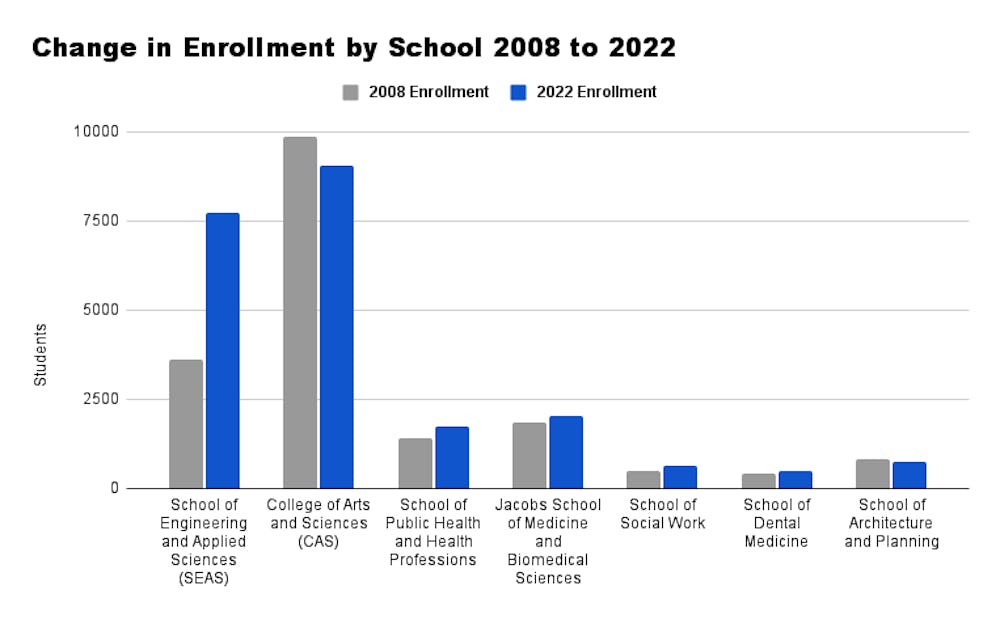The School of Engineering and Applied Sciences led UB’s growth over the past 15 years, while enrollment in most other schools remained steady, according to data from the UB Office of Institutional Analysis.
Between fall 2008 and fall 2022, the School of Engineering and Applied Sciences (SEAS) more than doubled in size, from 3,597 students to 7,729. SEAS now accounts for over 24% of the student body at UB, making it the second largest school behind the College of Arts and Sciences.
Enrollment at UB rose by 12% over the same 14-year time period, increasing by 3,907 students to a total of 32,099.
Beside SEAS, the School of Public Health and Health Professions, the Jacobs School of Medicine and Biomedical Sciences, the School of Social Work, and the School of Dental Medicine have all grown by more than 10% since 2008.
Combined degree programs, which counted only 39 students in 2008, have seen a sharp enrollment increase beginning in 2019. The enrollment is now at 739 students. Enrollment has remained relatively steady in the nursing and management schools, as well as in the Graduate School of Education. The College of Arts and Sciences and the School of Architecture and Planning have seen decreases of around 9% and 12%, respectively.
The steepest decline is a drop of nearly 68% in undergraduate enrollment within the School of Pharmacy and Pharmaceutical Sciences (SPPS). In an email to The Spectrum, UB spokesperson John Della Contrada attributed the change to the school’s Early Assurance program.
The program offers high school students enrollment directly into the Doctor of Pharmacy program after two years of prescribed undergraduate coursework, without the need to enroll in the undergraduate Pharmaceutical Sciences program.
Students enrolled in the Early Assurance program are not counted in enrollment numbers for SPPS until they begin the doctoral program in their third year of studies, Della Contrada said.
Enrollment in SPPS graduate programs has increased moderately since 2008.
Sol Hauser is a news editor and can be reached at sol.hauser@ubspectrum.com.





